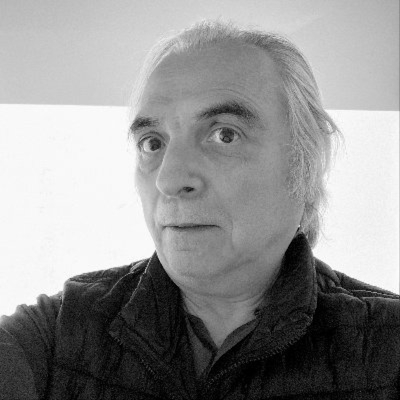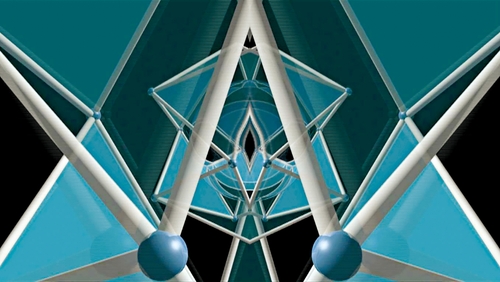

Abstract Spheroid Sold
2025, Digital format, processed CGI and AI , Geometrical Abstraction
This “digital mandala” is expressed as a geodesic spheroid in the center of concentric circular waves floating above an AI generated highway and cityscape. The final composition was made with graphic components created using VDMX (a real-time VJ graphics app), A 3D CGI model of sinuous tubing made with Blender, and background imagery generated by the AI app called Runway Gen-3 Alpha.
- Country United States
- Year 2025
- Styles
- Medium
- Physical canvas 103cm x 58cm

Victor Acevedo is a pioneering digital artist known for his work in printmaking and video. Since 2007, he has focused on producing visual music videos, often issuing archival prints and NFTs derived from his video works. His hybrid style blends figuration and geometric abstraction, sometimes leaning into pure abstraction.
An early adopter of digital tools, Acevedo began creating computer-generated art in the early 1980s, using pre-Windows software. His work has been shown in over 130 exhibitions worldwide. Influenced by Cézanne, Picasso, Escher, Dalí, and Buckminster Fuller, his practice explores geometry and perception, often through a lens he calls “geometrical Surrealism.”
A key concept in his work is the "void matrix"—a geometrical metaphor for the invisible structures underlying reality, inspired by Fritjof Capra’s The Tao of Physics. He often uses Buckminster Fuller’s isotropic vector matrix (IVM) and Cuboctahedron forms to visualize this.
Acevedo’s career spans three main phases:
- 1977–87: Analog painting, drawing, and film
- 1983–2007: Digital prints
- 2007–present: Visual music and video art
His early digital works like Ectoplasmic Kitchen (1987) were shown as both gallery prints and audiovisual projections. By the mid-1990s, he had adopted 3D software such as Softimage and collaborated with figures like Billy Name of the Warhol Factory. A pivotal moment came in 1998, when he exhibited alongside Escher at the Escher Centennial Congress in Rome.
Acevedo’s writings on digital art have been widely published, and his work is included in several major collections, including the Victoria & Albert Museum and the Anne + Michael Spalter Digital Art Collection. His image The Lacemaker was featured in the 1999 documentary The Story of Computer Graphics.
In the 2000s, he began exploring synesthesia, cymatics, and audio-reactive animation, merging his visual language with electronic music. As part of the LA Video Artists (LAVA) community, he performed live visuals at underground EDM events, fusing VJing with his interest in Synergetic Geometry.
With over 35 years in visual art, Victor Acevedo continues to push the boundaries of digital aesthetics, perception, and structure through an ever-evolving, multi-sensory practice.
- Color profile description
- 48 bit color depth, 281 Trillion Colors
- Photographer
- Digital Original Studio

